I am embarrassed to admit how ignorant of the Gulf States I was before this trip. One of the small, but essential, things that I learned was the relationship of Dubai, Abu Dhabi and the United Arab Emirates. The UAE is a federation of seven individual emirates of which Dubai and Abu Dhabi are the most widely known. Dubai is the largest city and Abu Dhabi is the richest of the emirates and the capital city.
We didn't arrive at Abu Dhabi until lunchtime. In the morning we had a lecture by Fetiche Posma-Zaalouk one of our tour managers. The subject was Emirate Women. She characterized their existence prior to the discovery of oil: harsh! Water was their dream, not equality. Since the formation of the UAE in 1971, they have access to schooling and jobs. The money they earn is their own, not their husband's or father's. The major limiting factor in career planning is that a woman traditionally may not be alone with any unrelated man, but otherwise most jobs are open to them. There are female pilots on Emirates Airlines! Expats, of course. Women must save money for themselves because the divorce rate is high, often initiated by the woman, and the courts do not typically grant maintenance.
One interesting observation is that the UAE in the early days imported teachers from Egypt, which was a much more open society. Those teachers often came home with more conservative views and were one source of increasingly radical Islam in Egypt.
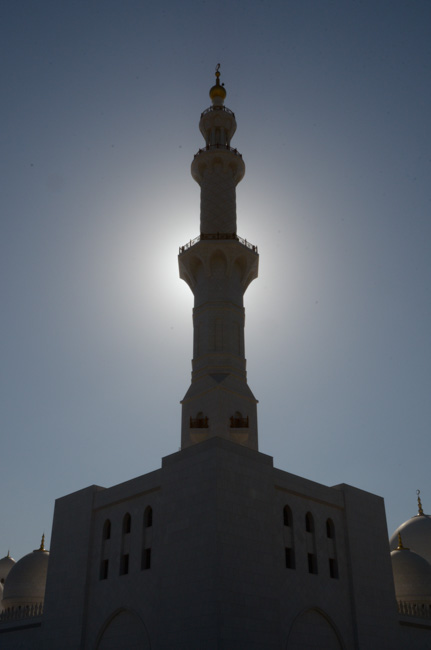
The Sheikh Zayed Grand Mosque in Abu Dhabi, which was our first visit after arrival, is seriously over-the-top in its decoration. The floors, columns, walls and ceilings are lavished with marble inlays, hand-knotted carpets, enormous crystal chandeliers, and other touches.
We didn't have to don abayas here, but I did get sent back to the bus for my raincoat because my lightweight long-sleeved sweater was deemed "transparent" by the morality police. One other lady in our group had the same challenge, but our leader had brought a spare abaya or two so she was also able to pass muster.
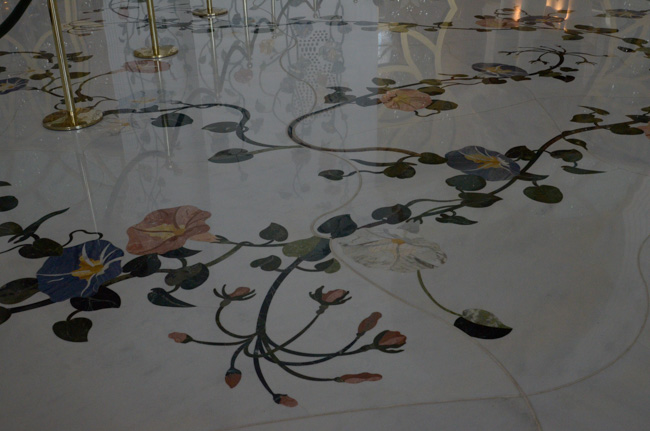
A sample of the marble inlays in the floor. These were found both inside the mosque and in the courtyards.
The courtyard mosaic is considered to be the largest example of marble mosaic in the world.
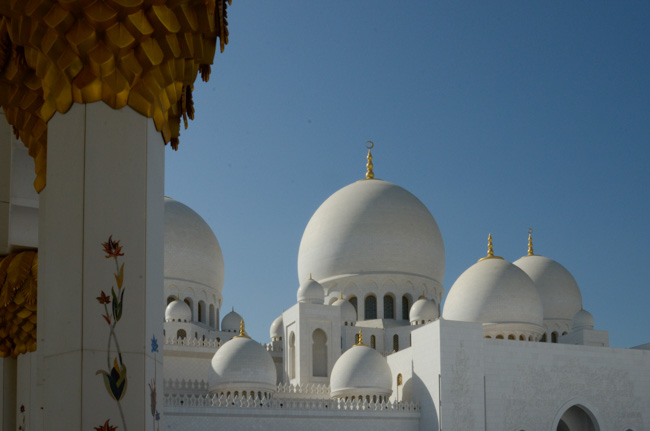
The inlays crept up the sides of all the many columns, which were in turn capped by lavish golden capitals. I was afraid to ask if the capitals were simply gold-colored, finished with gold leaf, or actually gold. I expect they were gold-leaf.
Each of the many domes were highly ornamented on the inside and most of them had ornate chandeliers.
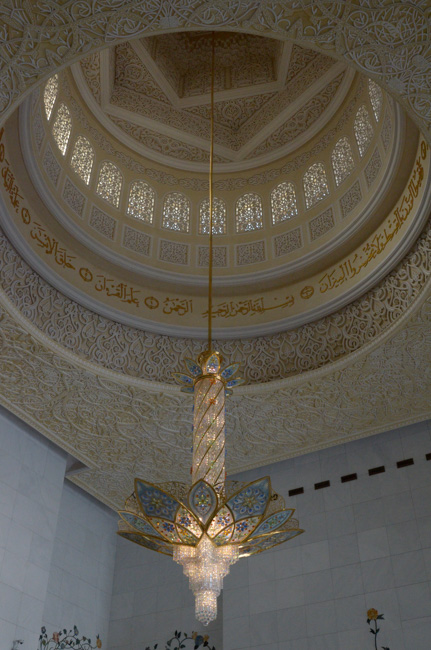
An example of one of the mid-sized domes.
The marble inlay was also repeated on the interior walls.
Elaborate plaster designs were found everywhere along with calligraphic inscriptions.
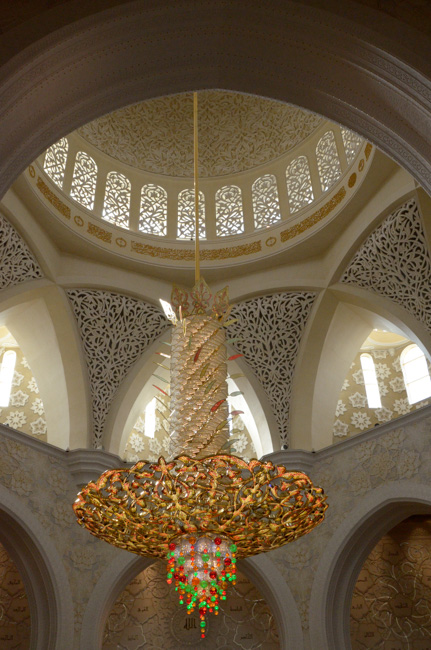
We were told that this was the largest chandelier in the world. It was located under the largest of the domes, but there were others almost as big elsewhere.
There are hundreds of tiny lights of all colors intermixed with the crystals.
Many of us found it a bit much. I irritated some folks when I started calling this the "tacky mosque." It does show a dramatic lack of respect, I'm afraid. I quickly max out on gorgeousity.
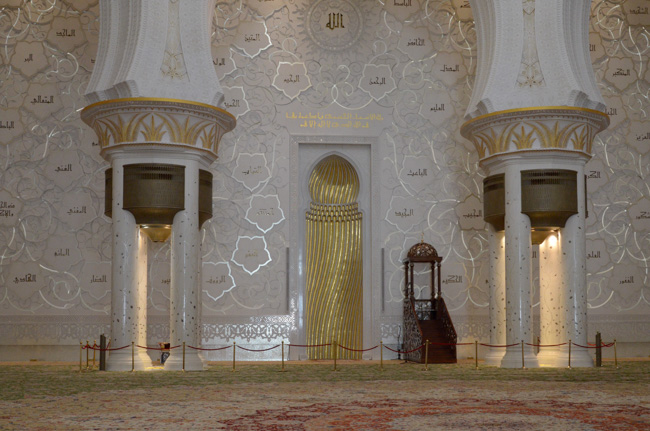
The shape of the mihrab is designed to act as a soundboard to amplify the voice of the prayer leader, who stood with his back to the congregation as he faced toward Mecca. Nowadays electronic amplification makes this unnecessary, but the tradition continues. Several of our guides demonstrated its effectiveness.
The carpet in this mosque is from Iran and it is hand-knotted in a single piece. It is the largest such carpet in the world. Slightly raised sections give the indication of where the faithful line up for prayers.
The structure to the right of the mihrab is the minbar where the imam gives a short homily. It is analogous to the pulpit in a Christian church.
The main prayer hall "seats" over 7000 worshipers. Two smaller halls, one for women, accommodate 1500 each.
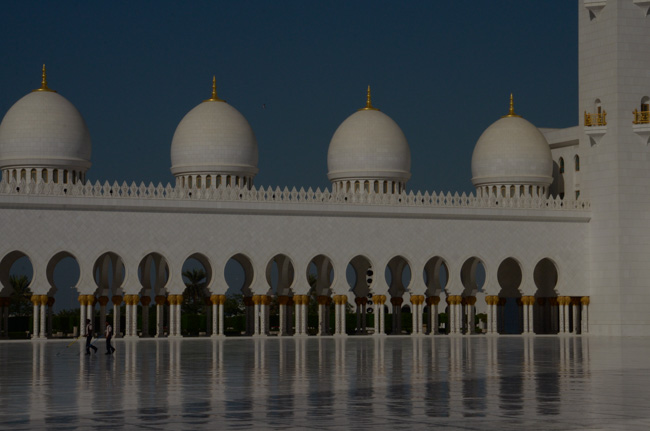
Throughout our visit these two men, expats of course, walked to and fro in the courtyard with their dust mops keeping everything clean and polished.
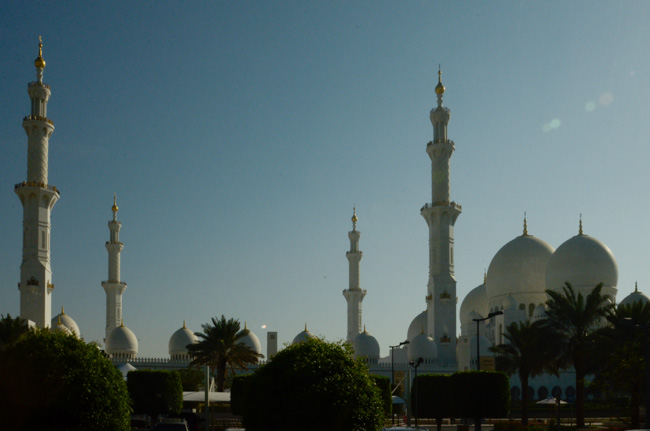
A final look at the mosque.
It is heralded as a structure to "unite the world" having used artisans and materials form many countries from the UAE to New Zealand, Malaysia, Italy and points between.
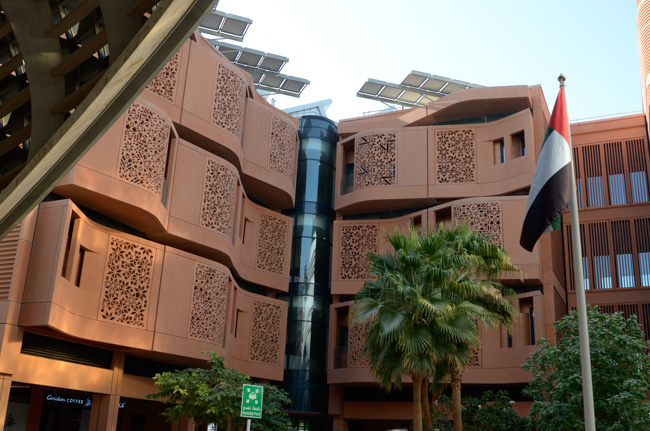
After visiting the mosque, we proceeded to Masdar City. It's original intent was to be a zero-carbon-emissions city-within-a-city, but like many dreams, that ran afoul of the 2008 recession.
It was impressive, but deserted. The most visible occupant was a calico cat. Not much has changed in the years since our visit, based on the link above, which is the most current reference I found as of 2021.
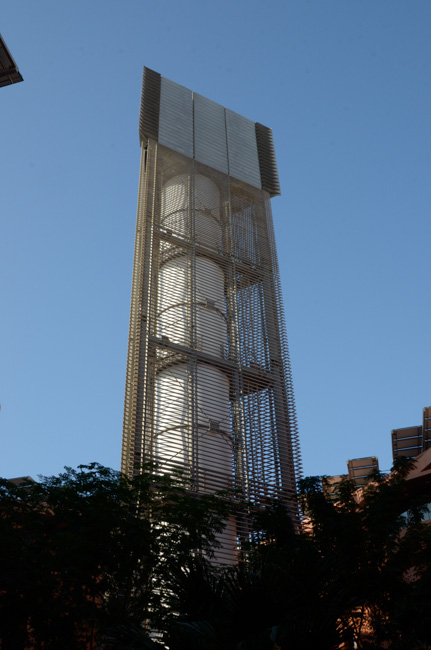
This modern rendition of the traditional wind towers that we saw in Dubai generated a cooling breeze, and the city plaza was quite comfortable on a warm day. How it would perform at 120° and up is an open question.
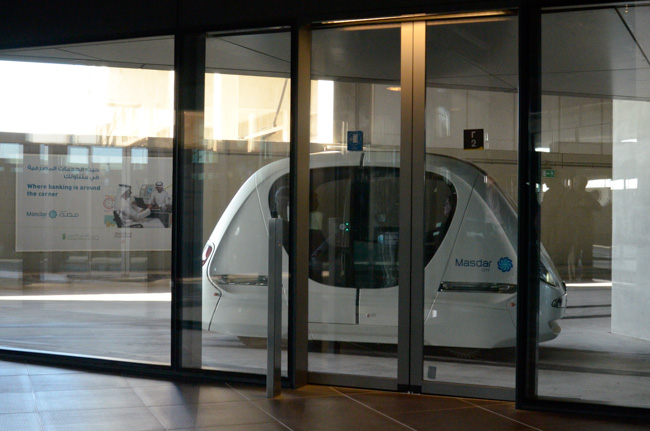
Our local guide insisted we be given the opportunity to ride the cute unmanned transport system. (Jim and I passed.) The tour leaders were reluctant because we were running behind schedule, but he asserted that it would only take five minutes.
Except that something happened and all the little cars stopped running!
A technician showed up (in a golf cart) and unjammed the car causing the backup so that everything began running again.
Then we discovered that some of our travellers, not having been instructed on what to do at the other end, had disembarked from the cars. That took another little while to sort out, but eventually we were all back together again.
So much for five minutes!
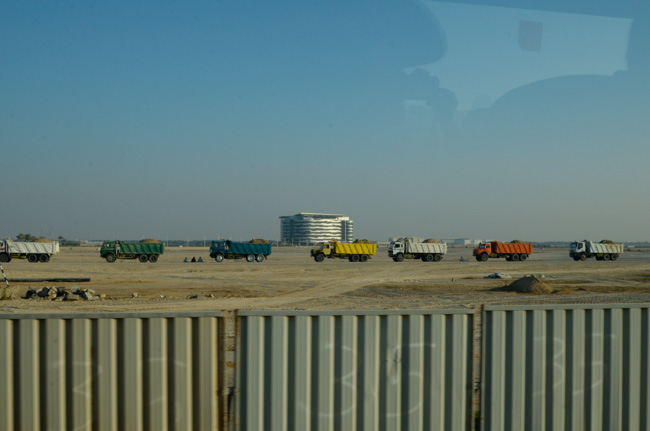
As we traveled to our final destination, we passed colorful trucks hauling sand to a new island under construction. The Emirates have a lot of sand and are desirous of more beachfront property than nature has provided.
I wonder what will happen to these new islands as the sea level rises due to global warming.
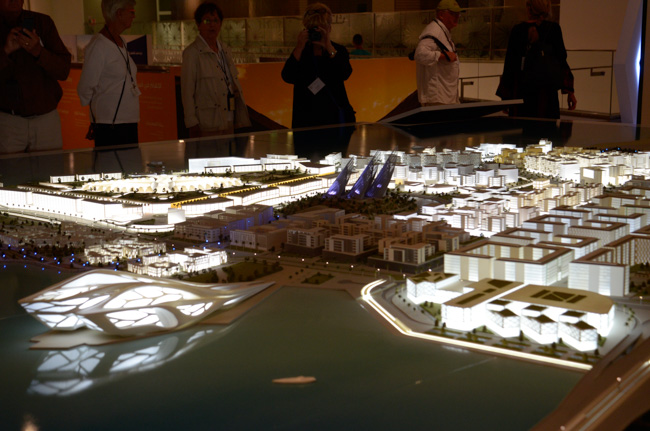
The Manarat Saadiyat development on Saadiyat Island is a flagship arts project sponsored by the Abu Dhabi government. It includes projects by NYU, the Louvre, the Guggenheim Museum and others. We were taken on a tour through the visitors' center that many of us viewed as a marketing presentation for their condos and other facilities. Apparently the local people had misrepresented this particular outing to the planning staff for our excursion.
Human Rights Watch has been tracking significant worker abuses on this project. The UAE government has responded by changing laws but hasn't been aggressive about enforcing them.
InterNations rates the UAE 40th out of 67 countries on its ranking of desirable places to live and work for expatriates.
We returned to the ship in time for afternoon tea and departure for Oman's Musandam Peninsula.
Click your "back" button to return to the previous page or click for our picture album.